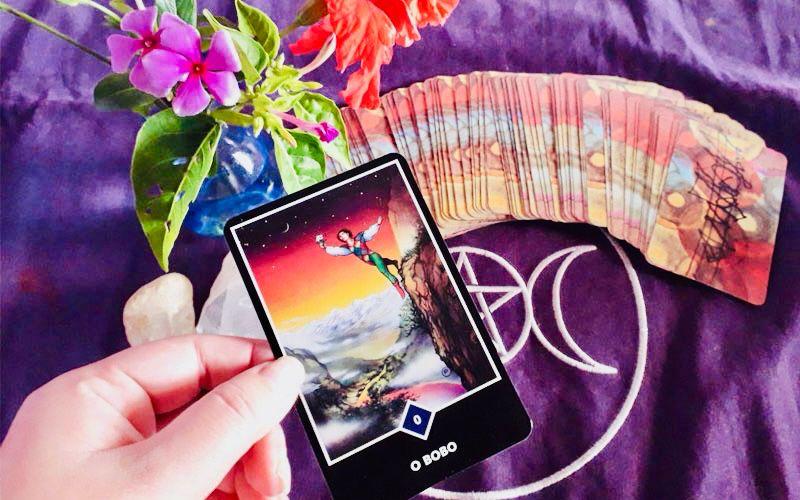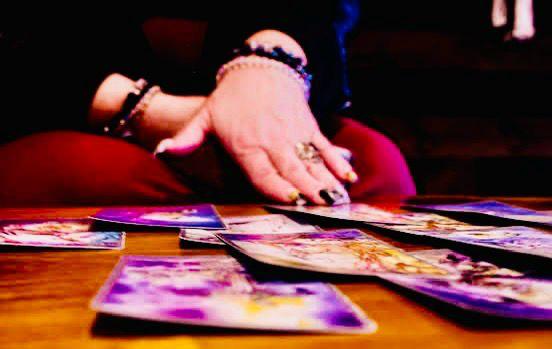
Tarot reading has intrigued humanity for centuries, weaving its way through various cultures and traditions. However, with its rising popularity, a plethora of misconceptions and myths have emerged, clouding the true essence of tarot. These myths often deter people from exploring tarot’s enriching and enlightening capabilities. In this article, we aim to debunk the top 5 tarot myths, providing clarity and understanding to those curious about this ancient practice. By shedding light on these misconceptions, we hope to demystify tarot and present it as a valuable tool for self-reflection and guidance.
Myth 1: Tarot Cards Predict the Future
One of the most prevalent myths surrounding tarot is the belief that tarot cards can predict the future with absolute certainty. This notion stems from the dramatic portrayals in movies and media, where tarot readers foretell imminent events with uncanny accuracy. However, this is far from the truth
The Reality
Tarot cards do not provide a concrete forecast of future events. Instead, they offer insights and potential outcomes based on the current circumstances and the energy surrounding an individual. The future is fluid and ever-changing, influenced by countless variables and personal choices. Tarot readings help individuals gain perspective on their present situation, enabling them to make informed decisions that can shape their future.
How Tarot Works
Tarot works by tapping into the subconscious mind, reflecting inner thoughts, feelings, and desires. It acts as a mirror, revealing hidden truths and guiding individuals towards self-awareness and personal growth. The symbolism and imagery of the cards resonate with the reader’s intuition, providing a deeper understanding of their current path and potential directions.
Myth 2: Only Psychics Can Read Tarot

Another common misconception is that one must possess psychic abilities to read tarot cards effectively. This belief often discourages enthusiasts from delving into tarot, thinking they lack the necessary skills or gifts.
The Reality
Anyone can learn to read tarot cards with practice, patience, and dedication. While some individuals may have heightened intuitive abilities, tarot reading is more about understanding the symbolism of the cards and developing a connection with them. It is a skill that can be honed over time through study and experience.
Learning Tarot
There are numerous resources available, including books, online courses, and workshops, that can help beginners learn the art of tarot reading. Joining a tarot community or finding a mentor can also provide valuable guidance and support. The key is to approach tarot with an open mind and a willingness to explore its depths
Myth 3: Tarot Cards Are Evil or Dangerous
The association of tarot cards with dark forces or negative energies is a myth that has persisted for centuries, often fueled by religious or cultural biases. This misconception portrays tarot as a tool of the occult, capable of summoning malevolent spirits or causing harm.
The Reality
Tarot cards are simply pieces of paper with images and symbols on them. They do not possess any inherent power, evil or otherwise. The perception of tarot as dangerous or evil is rooted in ignorance and misunderstanding. In reality, tarot is a neutral tool that reflects the reader’s intentions and energy.
Positive Intentions
When approached with respect and a positive mindset, tarot can be a powerful aid for self-exploration and personal growth. It encourages introspection, helping individuals uncover their strengths, weaknesses, and areas for improvement. Like any tool, the outcome of a tarot reading depends on the intent and approach of the user.
Myth 4: You Must Follow Strict Rules
There is a belief that tarot reading involves rigid rules and rituals, such as keeping cards in a specific order, never letting others touch them, or always conducting readings in a particular manner. These supposed rules can make tarot seem daunting and inaccessible to beginners.
The Reality
While some readers may develop personal rituals or practices, there are no universal rules that must be followed. Tarot reading is a deeply personal and intuitive practice, and each reader develops their own style and methods.
Flexibility in Practice
The most important aspect of tarot reading is the connection between the reader and the cards. Whether you shuffle the cards in a specific way, use certain spreads, or follow particular rituals is entirely up to you. The key is to find what resonates with you and enhances your reading experience. Flexibility and intuition should guide your tarot practice, allowing it to evolve organically.
Myth 5: Tarot Is Just a Parlor Trick

Skeptics often dismiss tarot as a mere parlor trick, equating it with fortune-telling gimmicks designed to entertain rather than enlighten. This myth undermines the depth and significance of tarot as a tool for personal insight and growth.
The Reality
Tarot has a rich history and tradition, deeply rooted in symbolism, psychology, and spirituality. While it can be entertaining, its primary purpose is to provide guidance, reflection, and understanding. Serious tarot practitioners approach their craft with sincerity and respect, aiming to offer meaningful insights and support to those seeking clarity.
The Depth of Tarot
The cards’ imagery and symbolism draw from various sources, including mythology, astrology, and alchemy, offering a multidimensional approach to self-discovery. Tarot readings can reveal underlying patterns, highlight strengths and weaknesses, and suggest paths for personal development. Far from being a simple trick, tarot is a profound tool for introspection and growth.
Conclusion
Tarot myths abound, but understanding the truth behind these misconceptions can open the door to a richer and more fulfilling experience with tarot. It is not about predicting the future, requiring psychic abilities, or following strict rules. Instead, tarot is a versatile and insightful tool for self-reflection, personal growth, and guidance.
By debunking these myths, we hope to encourage a more informed and open-minded approach to tarot. Whether you are a seasoned practitioner or a curious newcomer, embracing the true nature of tarot can lead to a deeper connection with yourself and the world around you. For those seeking deeper insights and personalized guidance, visit divineechoeswithsonali, where you can explore tarot card readings and guided meditation sessions. Explore, learn, and let the cards guide you on your journey of self-discovery and enlightenment with Divine Echoes with Sonali.

